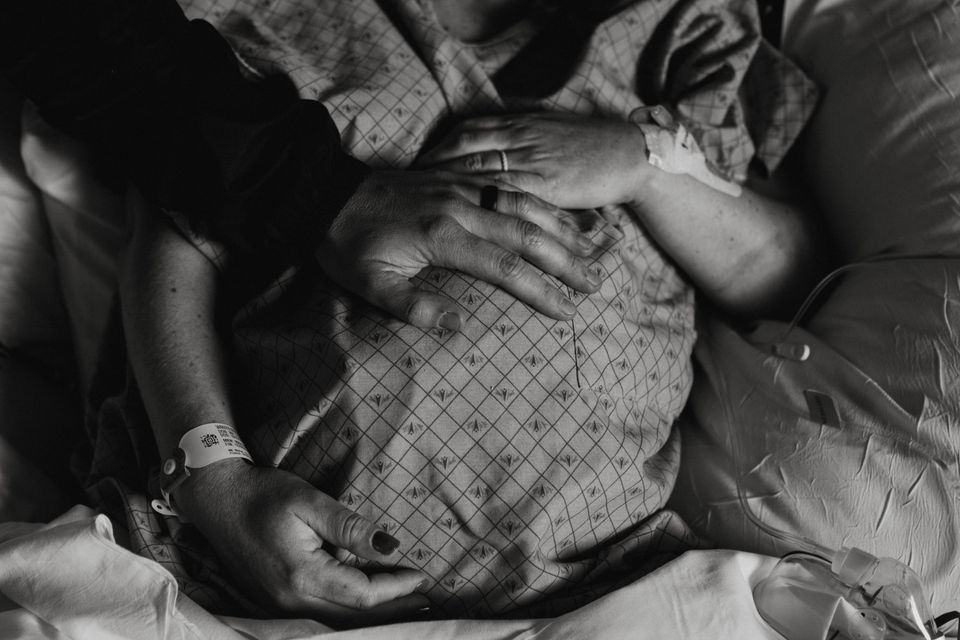How does birth happen? Depending on where you live, the process of birth may be extremely different! Over the past centuries, birth has become medicalized. Our beliefs about birth can influence how, where and when births take place.
The body was designed to birth! The natural process is complex! So complex, when you start learning about it, it is absolutely wondrous how babies are born. There are physical and physiological processes that take place long before the due date arrives. Made Mindful's mission is to empower and educate individuals so they can trust their body and understand how standard interventions or hospital protocols can benefit them during labor and take part in the process.
When a baby is ready to be born, the baby releases a protein into the amniotic fluid as a signal that their lungs are ready to start breathing oxygen.
This signal stimulates the uterus to start contracting, and starts the process of dilation where the woman’s cervix begins to thin and open. The pressure of the babies head on the cervix could cause the bag of water to break, while in other circumstances, the water remains intact until the pushing stage. Hormones are are huge factor in how a baby is delivered! Because some of the synthetic substitutes (such as Pitocin) interfere with the release of these hormones in the body, although these interventions are intended to assist in the delivery of a baby, could mask the bodies natural ability to birth.
One of the biggest myths about birth is that a big baby cannot fit! Throughout pregnancy relaxin has been increasing which softens cartilage, and allows the pelvis to spread during the birth process. Because of this process, even what appears to be the combination of a big baby and a small woman, the baby is still able to fit! As the cervix transitions from 8-10 cm, the body is flooded with endorphins.
Contractions have been steadily increasing in duration and intensity, but with this gradual build, her body has been producing endorphins that act as neurotransmitters to the nerve cells and stop pain! The natural endorphin level rises to match the pain sensation. Essentially you have built in pain medication inside your body. The failure to release these endorphins allow pain to occur. If Pain medication is administered, natural endorphins are not produced (which is why some women describe birth as painful with a failed epidural)
If stress or fear are present, the hormones that help your body progress, are now constricted and the blood vessels of the uterus and prolong or halt labor. But if she feels safe and secure, her body will continue to progress. Once 10 cm is achieved, the body now begins to feels alert, due to an excessive amount of adrenaline released.
Even though the cervix is fully dilated, the sensation to push may not yet be present, offering the mother a resting stage and the baby more time to descend. In the meantime, hormones continue to flood your body, preparing for pushing. Your baby also is experiencing extra amounts of adrenaline, so they will be alert and awake and ready to breastfeed. When adrenaline, endorphins and oxytocin levels peak, your body is ready to push and will work with you and your baby. The baby then maneuvers the complex shape of the pelvis and with each push, they twist and turn through the birth canal. As the head crowns, the vulva begins stretching to accommodate the head. The baby typically emerges facedown, but will turn quickly to allow for their shoulders to pass. The baby’s central nervous system reacts and they take their first breath.
When the mother’s body experiences this cocktail of hormones, there is an ecstatic release after birth. For anyone who has experienced birth, it is invigorating and empowering to hold your precious baby after your body and your baby have worked so closely together in harmony for the miracle to occur.
To view the content of this blog on YouTube, visit Made Mindful's YouTube station. Like and Subscribe for additional tips and tricks to assist in your birth and motherhood journey.
We wish to teach you more through our Birth Made Mindful Course! Visit today and start preparing for your Birth Made Mindful!


